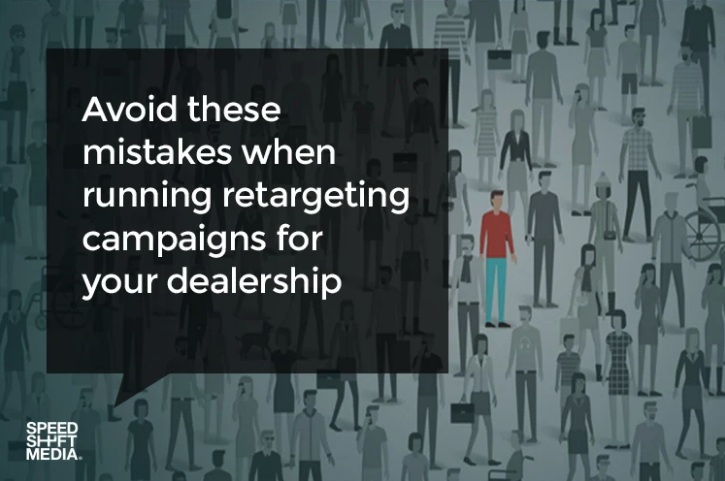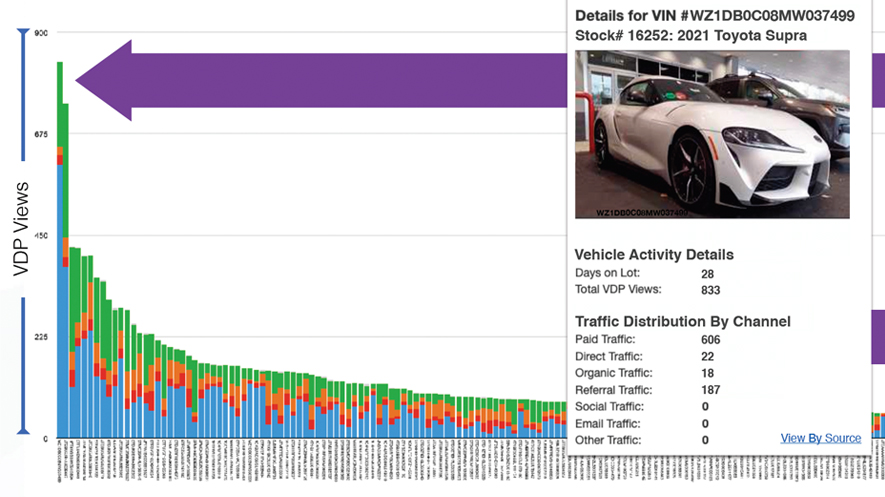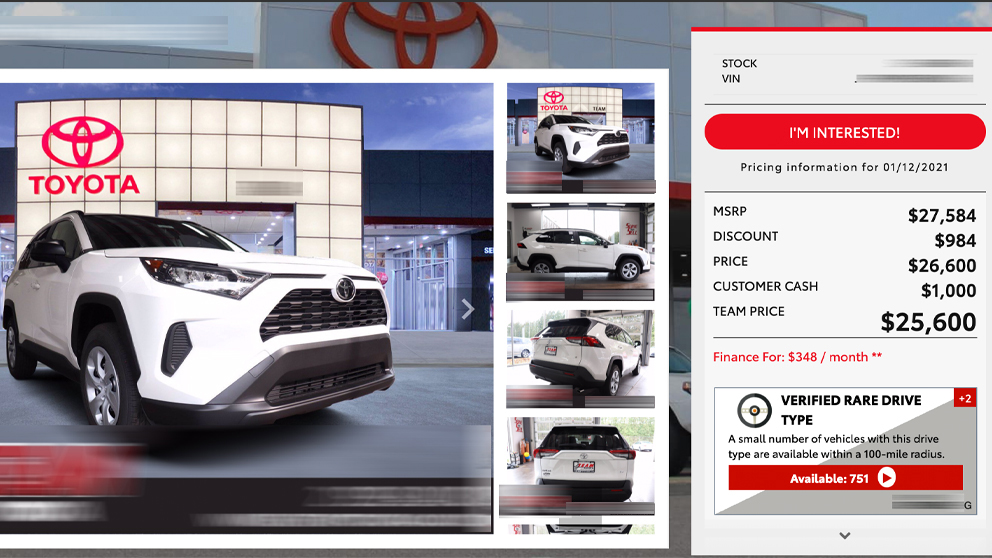The Most Common Retargeting Mistakes That Dealerships Make
Dealers spend thousands of hours and millions of dollars to attract new car shoppers to their website. However, many savvy marketers are aware that return visitors are much more performant than new visitors. Yet dealerships spend much less time on retargeting efforts than trying to get more people to their website.
As a result, they could be losing out on potential conversions and sales. Let’s address four of the most common mistakes dealerships make when running retargeting campaigns.
Retargeting all website traffic as if it was the same
First, let me address a very underused retargeting tactic; website segmentation. Taking a few extra steps to actually segment your website will improve your retargeting efforts down the road as different sections of your website pertain to different interests of your shoppers. The premise is simple, people who are looking for cars should get retargeted for cars and people looking for service or parts should be retargeted for services and parts.
Here’s an example of site wide retargeting if it happened in real life:
Jim walks into your dealership to book an appointment to get snow tires put on his brand new SUV that he bought from your dealership a few months ago. On the way out, he is given a stack of brochures for new SUVs and asked if he wants to have a look and a test drive. Jim indicates he just bought a new SUV but is interested in service and accessory deals, which the salesperson addresses by handing him new sports car brochures. Do you see the problem here?
By segmenting your traffic in advance, your retargeting will be significantly more effective as it will correctly target what the customer is looking at. People looking for new and used cars are different than people looking for service or parts and therefore will require different retargeted advertisements. Service needs are addressed with service ads. If an online customer looks at a Used Cars and a Service page, they get retargeted for both. However, if you don’t compartmentalize your traffic into segments, then you are effectively treating all your website users the same, and your ads won’t perform as well.
Retargeting only with offers and not with inventory
I have a pretty active family. This summer we all went out and were fitted for new snowboards to hit the mountains when winter comes. With that, it was probably time to look into upgrading the family car to something roomier and 4WD. I take to the internet to do a little window shopping around the area to see what is available and maybe find out what other people are thinking.
As expected, I start getting offers popping up in my browser for financing specials and annual BBQs or typical retargeting that had no correlation to what I was specifically looking for. Hey, these are all great deals, but completely unrelated to what I was actually looking for when I went to their dealership site.
Here is the problem with retargeting everyone that comes to your site with general offers instead of inventory-you are treating every site visitor the same. If I was seeing ads in my browser for the 4WD family vehicle that I had been researching along with the price that would be great! This is also EXACTLY how retargeting should work.
Offers are great if they are things that I want or I’ve never visited your dealership for anything specific and you’re trying to drum up new interest. As soon as the shopper has been to your dealership site and looked at a specific vehicle,they should be segmented and placed in the sales funnel. Now they can be served specific, inventory-based ads for you to maximize both your advertising dollars AND the opportunity to close sales with your clients.
There are specific tools and services that are equipped to go beyond general brand offers like typical retargeting tends to. If you avoid the common mistakes of not segmenting your site’s traffic, then retargeting with inventory ads will be easy.
Not setting a time limit or frequency cap
This has happened to me, so I can speak from personal experience. I’m a lover of the Volvo and when I have the inkling to get a new Swedish delight, I take to the internet to find my new chariot. The last time I went looking, I found my new car with relative ease. I searched a few dealerships and voila, I found the car I was looking for. I called the dealer, made the appointment for the test drive and drove away with my new car. Painless, you think? I started getting retargeted by not only the dealership I just bought from, but also the other two that I had visited.
Now, I’m in the business of helping dealerships sell more cars, so this retargeting was expected. I know how the technology works. To their credit, the dealer I purchased from stopped stalking me at about the 30 day mark. One of the other dealers followed me for months. That’s just annoying to be honest, because I knew the dealership’s marketing team or their agency partner hadn’t bothered to set a frequency cap or time limit on my retargeting. I almost felt compelled to call them and offer my services so as to not alienate any further business for them.
I can’t stress enough the need to set time and frequency limits on your efforts. Nobody likes a stalker. What’s appropriate depends on your teams’ goals. Consider having an expiry date between 30 and 45 days from first contact and serve your ad no more than 10 times a day to the same person. This is a general rule that I like to follow and seems to be the norm when engaging in inventory retargeting.
Overlooking ad placement locations
If you’re selling cars and trucks with your retargeting ads, chances are you want them shown on websites that car and truck buyers frequent. Car enthusiast sites, car and truck magazine sites, racing sites, motorsport sites and any other site your traffic tends to visit. You get the idea. However, the site in which the ad is served will affect people’s impression of the ad itself . So if your ads are on Road & Track, the New York Times or your local newspaper, chances are your ads are in good company. That’s a best case scenario. However, this won’t always be the case.
Many sites sell ad space as a means to generate revenue. Some sites have exceptional traffic and could possibly be where your buyer demographic or your retargeted customer is browsing. However, it doesn’t necessarily mean that you should place your ads there. It is never a bad idea to find out where your advertisements are being shown. Although likely high in traffic, sites with juvenile, inappropriate, or objectionable content, are possibly not where you want your ads to be seen. Even if your customers are there, you can always be the victim of “guilt by association.”
It may take a little work , but it never hurts to build a blacklist of sites of where you don’t want your ads served or retargeting efforts viewed. It’s a good way to exercise control over where your ads are placed.
With a little diligent work done in advance, your retargeting efforts will pay off by bringing back the car buyers that are most interested in your inventory and will help you obtain the success you have been hoping for.







